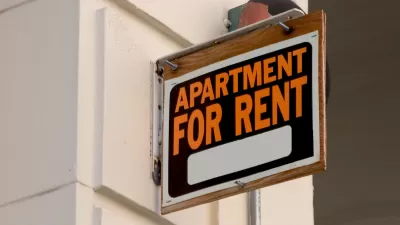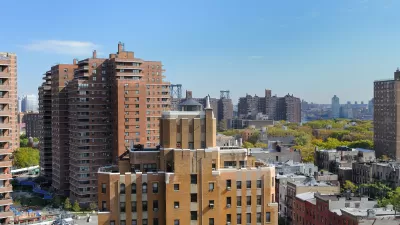A controversial affordable housing project proposed for Somerville, Mass. diffused community opposition by coordinating with the for-profit developer of an adjacent parcel. Could the partnership provide a template for moderating NIMBYism?
"Proposals for affordable housing developments elicit predictable opposition, summed up in the familiar acronym, NIMBY—Not In My Back Yard—is the well-known shorthand for complaints about offensive land uses, offending architectural designs, and traffic disruption," writes Laurie Goldman. "While these concerns are sometimes justified, the discourse frequently veils one of the most pronounced reasons residents oppose affordable housing: fears that the presence of low-income households (and people of color) will increase crime rates, drive down property values, and fundamentally change the neighborhood’s character."
But by coordinating their plans to build 40 units of workforce rental housing with the for-profit developer of the former funeral home next door to their site, The Somerville Community Corporation (SCC) may have found a replicable recipe for navigating NIMBY hurdles.
"Taken together, the two projects form a defacto mixed-income development without reducing the number of affordable units SCC is able to provide," says Goldman. "The two developers plan to adopt common design elements so that there are minimal differences between the affordable and market-rate developments. The fact that each contracts with the same property management company also promises to foster harmonious relations among residents of both complexes."
"The prospects of the coordinated development appear to be having an effect on the NIMBY discourse," she adds. "The comments that followed the joint presentation of the proposal at last week’s Planning Board meeting were decidedly less abrasive."
FULL STORY: A New Way to Diffuse NIMBYism?

Maui's Vacation Rental Debate Turns Ugly
Verbal attacks, misinformation campaigns and fistfights plague a high-stakes debate to convert thousands of vacation rentals into long-term housing.

Planetizen Federal Action Tracker
A weekly monitor of how Trump’s orders and actions are impacting planners and planning in America.

In Urban Planning, AI Prompting Could be the New Design Thinking
Creativity has long been key to great urban design. What if we see AI as our new creative partner?

King County Supportive Housing Program Offers Hope for Unhoused Residents
The county is taking a ‘Housing First’ approach that prioritizes getting people into housing, then offering wraparound supportive services.

Researchers Use AI to Get Clearer Picture of US Housing
Analysts are using artificial intelligence to supercharge their research by allowing them to comb through data faster. Though these AI tools can be error prone, they save time and housing researchers are optimistic about the future.

Making Shared Micromobility More Inclusive
Cities and shared mobility system operators can do more to include people with disabilities in planning and operations, per a new report.
Urban Design for Planners 1: Software Tools
This six-course series explores essential urban design concepts using open source software and equips planners with the tools they need to participate fully in the urban design process.
Planning for Universal Design
Learn the tools for implementing Universal Design in planning regulations.
planning NEXT
Appalachian Highlands Housing Partners
Mpact (founded as Rail~Volution)
City of Camden Redevelopment Agency
City of Astoria
City of Portland
City of Laramie





























